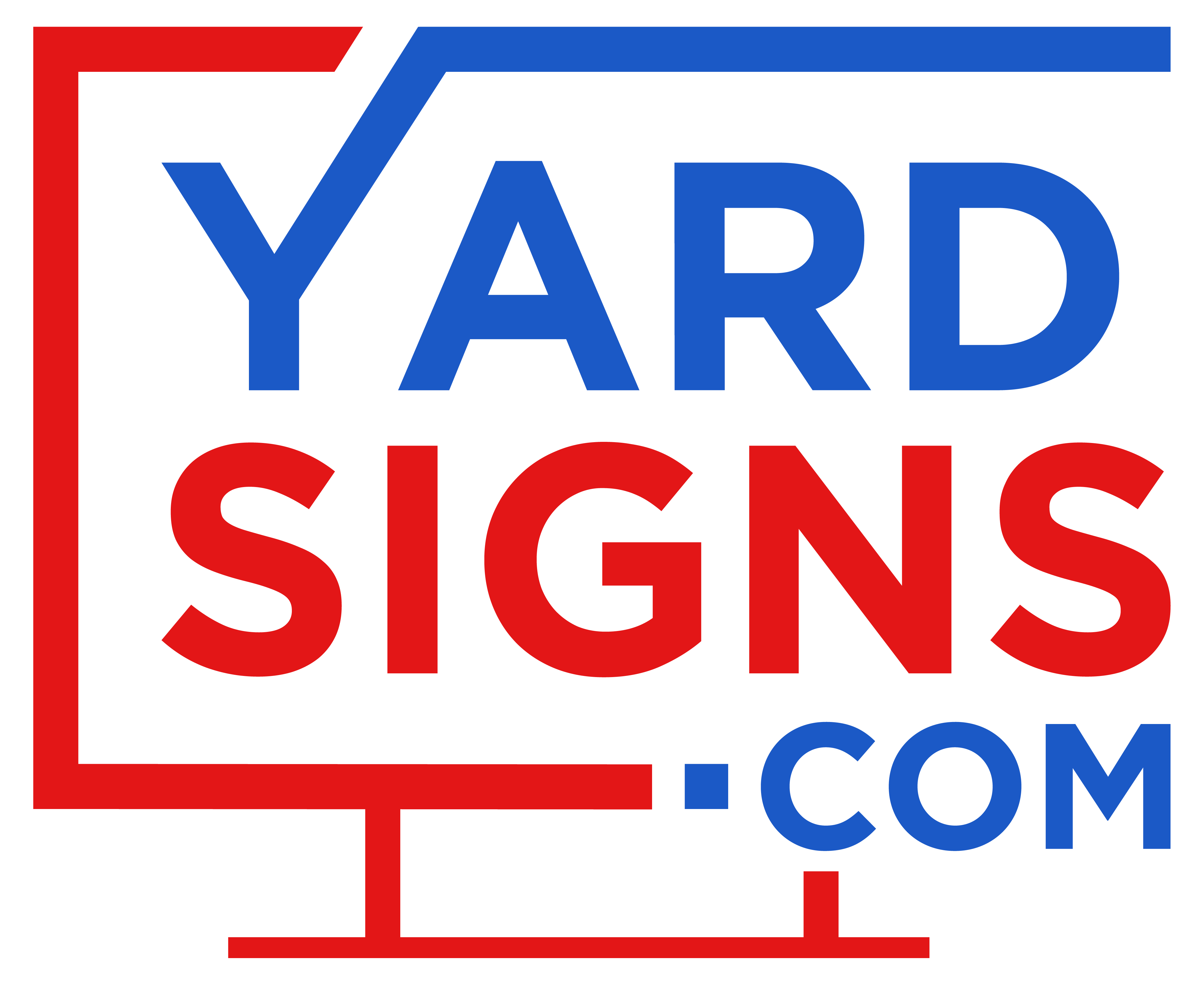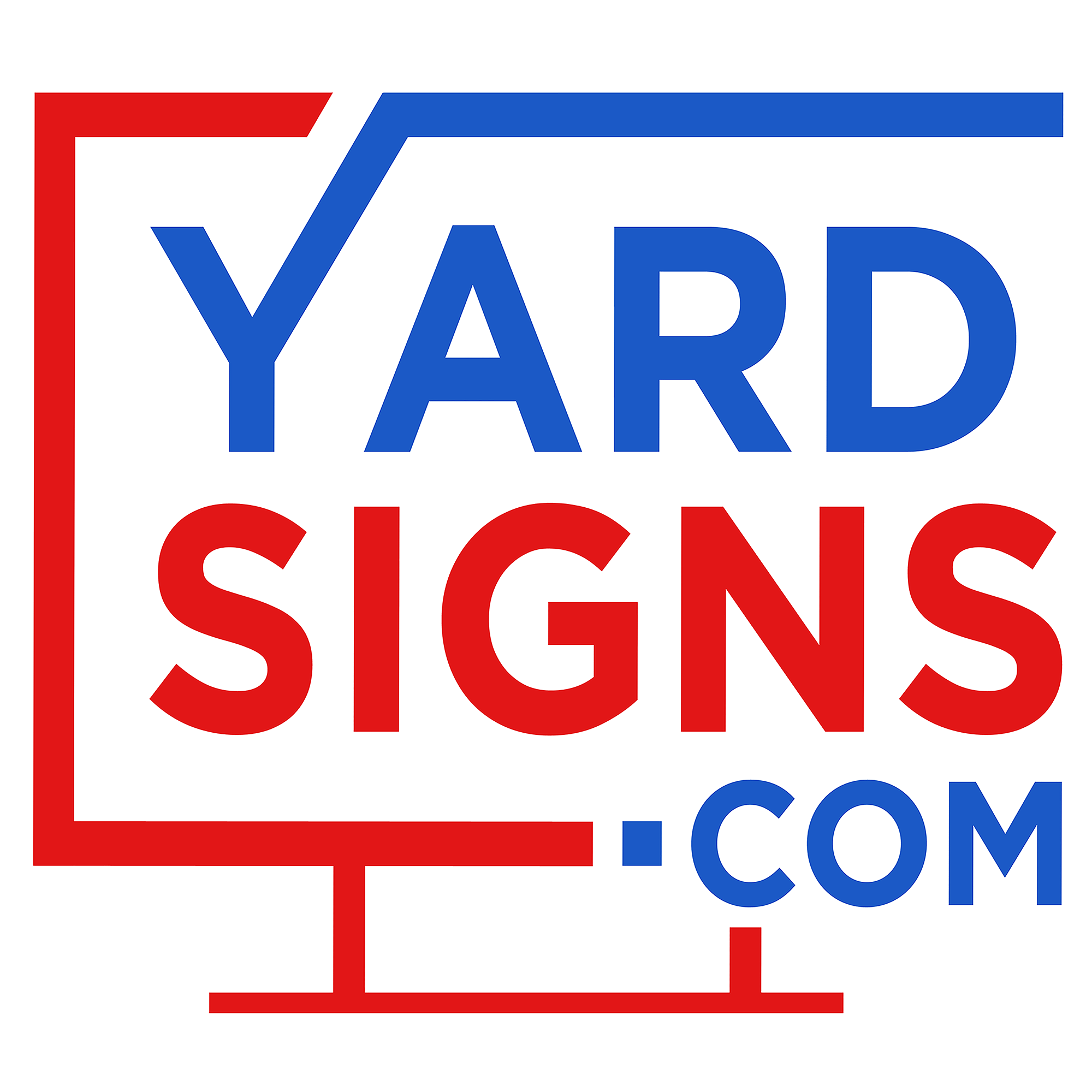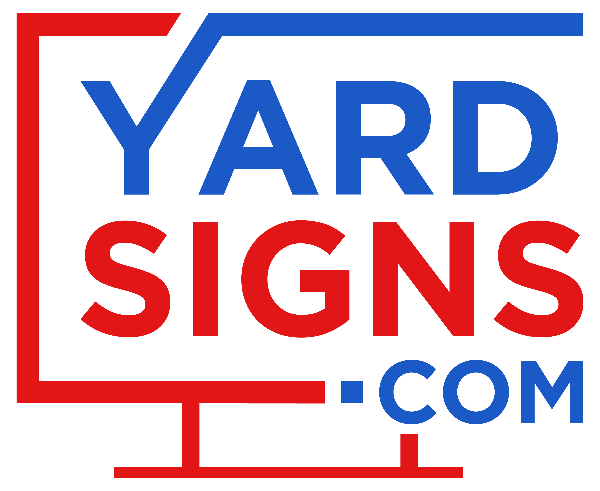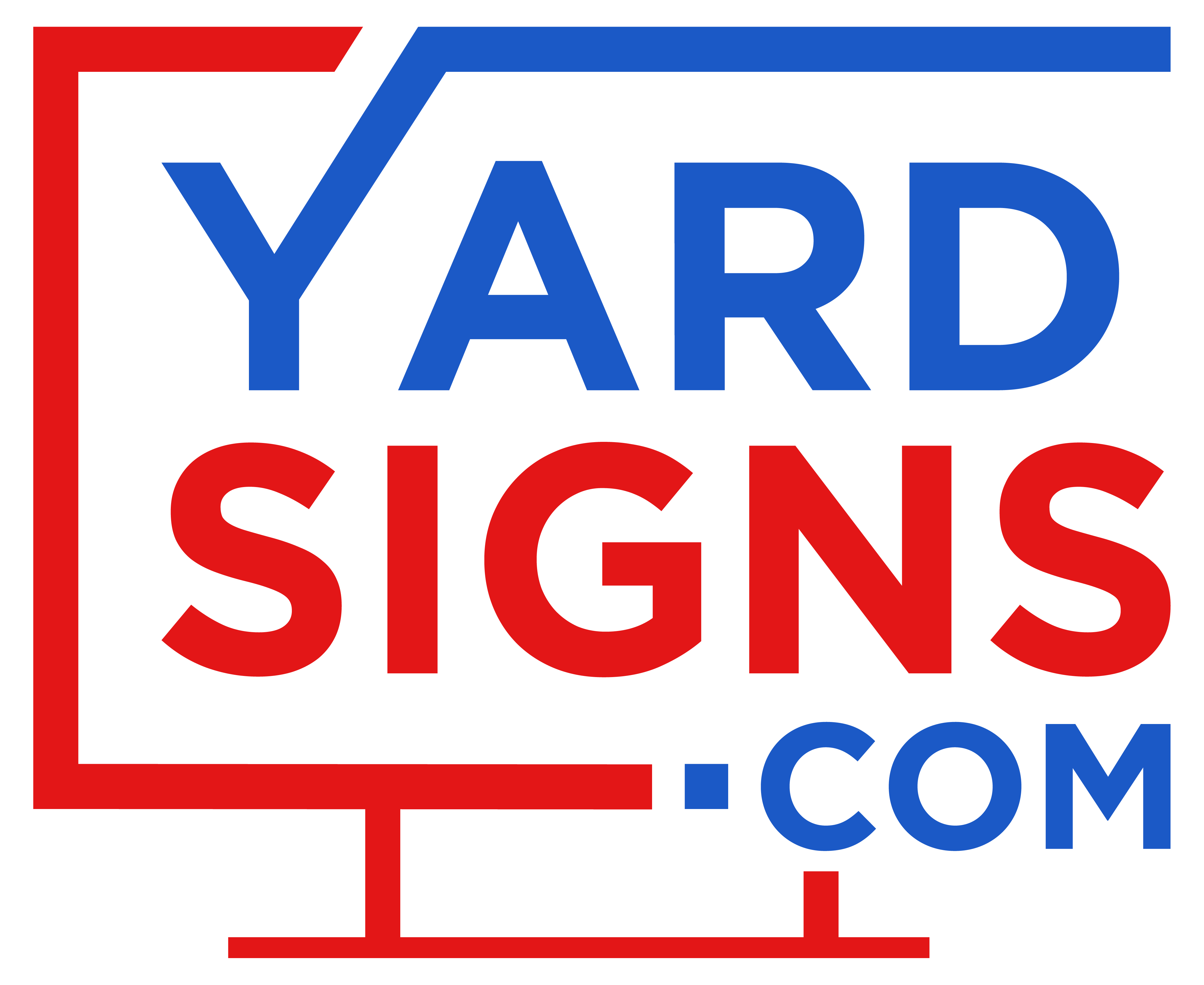QR codes are now a regular part of daily life. They appear on menus, posters, packaging, and business cards. As of 2023, they are also commonly used on outdoor signage, including yard signs.
This guide explains how QR codes work on yard signs, how they are added, and how they are used in real-world settings. It contains practical details about materials, printing, and placement for anyone interested in adding QR codes to their signage.
The information here applies to real estate agents, local businesses, event organizers, and others using outdoor signs for communication. This section begins with the basics.
What Are QR Codes on Yard Signs?

Yes, you can put a QR code on a yard sign. This is a common practice in real estate, business advertising, and event promotion.
A QR code, short for Quick Response code, is a square-shaped barcode that stores information. When someone scans it with a smartphone camera, the code links to digital content like a website, contact information, or video.
Most modern smartphones can scan QR codes without needing a special app. The camera recognizes the code pattern and opens the linked content automatically.
QR codes work well on yard signs because they connect physical advertising with online information. A person walking or driving by can quickly scan the code to learn more without writing down a web address or phone number.
- Scan Rate: QR codes on yard signs typically see 5-10% engagement rates when placed in high-traffic areas
- Compatibility: Works with nearly all smartphones made after 2017
- Information Types: Can link to websites, videos, contact forms, menus, or downloadable files
Why Use QR Codes for Outdoor Marketing?

QR codes bridge the gap between physical signs and digital content. This connection allows you to share more information than what fits on a sign.
When someone scans a QR code, they can immediately access your website, contact form, or other digital resources. This instant connection helps turn interest into action while the person is still in front of your sign.
QR codes also make your yard signs interactive. Rather than just reading text, people engage directly with your content. This interaction creates a more memorable experience than traditional signage alone.
Another advantage is measurement capability. Many QR code platforms provide data on how many people scanned your code and when. This information helps you understand which sign locations work best.
For real estate and local businesses, QR codes solve the problem of limited space on yard signs. Instead of cramming too much text onto a small sign, you can include just the essential information and let the QR code provide the details.
Key Benefits for Real Estate and Local Businesses
Real estate agents use QR codes on yard signs to connect potential buyers with property listings. A single scan can show interior photos, virtual tours, property details, and contact information for scheduling viewings.
Local businesses add QR codes to their signs to display menus, service lists, and special offers. Restaurants, for example, can link to their full menu and online ordering system, while service providers can showcase their work portfolio.
Contractors and home service professionals benefit from QR codes by linking to customer reviews, before-and-after photos, or quote request forms. This helps build trust and generate leads directly from job site signs.
|
Industry |
QR Code Application |
Customer Benefit |
|
Real Estate |
Property listings & virtual tours |
Instant access to complete property information |
|
Restaurants |
Menus & online ordering |
Easy way to view options and place orders |
|
Contractors |
Portfolio & quote requests |
Quick way to see past work and request services |
|
Events |
Ticketing & schedules |
Simple registration and event details access |
Political campaigns also use QR code yard signs to connect voters with candidate information, donation pages, and volunteer sign-up forms. This digital connection helps campaigns build their supporter base directly from street visibility.
Materials and Design Tips for Weather Resistant Signs
- QR codes on yard signs need to withstand outdoor conditions. The materials you choose affect how long the code remains scannable when exposed to sun, rain, and temperature changes.
Corrugated plastic (coroplast) is the most common material for yard signs with QR codes. It's lightweight, water-resistant, and affordable. For longer-lasting signs, aluminum provides superior durability but costs more.
The QR code itself should be at least 1.5 inches square on a standard yard sign. Larger is better, especially if you expect people to scan from a distance like from a sidewalk or car.
Material Options:
- Corrugated plastic: Good for 3-6 months of outdoor use
- Aluminum: Lasts 2+ years in outdoor conditions
- Vinyl with UV coating: Helps prevent fading from sunlight
High contrast between the QR code and background is essential for reliable scanning. Black codes on white backgrounds work best. Avoid low-contrast color combinations like yellow on orange or light gray on white.
The printing method matters too. Digital printing works well for short-term signs, while UV-resistant inks provide better longevity for signs that will be displayed for months.
When designing your sign, leave a quiet zone (empty space) around the QR code. This margin, about ¼ inch on all sides, helps phone cameras identify and scan the code correctly.
Step By Step Guide Adding A QR Code to a Yard Sign
1. Generate Or Choose a QR Code Tool
Creating a QR code starts with selecting the right generation tool. Free options like QR Code Generator or QRCode Monkey work well for basic needs. For advanced features like tracking scans or changing the destination later, services like Bitly or Beaconstac offer paid plans.
The main difference between QR code types is static versus dynamic. Static codes contain fixed information that can't be changed after creation. Dynamic codes can be updated later without reprinting your sign, though they typically require a subscription service.
When generating your code, choose the “URL” option if you're linking to a website. Other options include plain text, phone numbers, email addresses, or vCards for contact information.
2. Select The URL Or Content to Link
Choose a specific destination for your QR code that delivers value to the scanner. Generic homepage links are less effective than targeted landing pages created specifically for sign visitors.
Make sure your destination page is mobile-friendly since most people will scan with smartphones. Large text, simple navigation, and fast loading speed improve the user experience after scanning.
Consider creating a dedicated landing page for each sign or campaign. This approach lets you track which locations generate the most scans and customize the content based on where the sign is placed.
3. Customize The Code for Branding
QR codes can include customization while remaining scannable. You can add color that matches your brand, round the corners, or include a logo in the center.
When customizing, use the highest error correction level (usually labeled as “H” or “high”). This setting ensures the code still works even if part of it becomes damaged or is altered with design elements.
Test your customized code on multiple devices before printing. Some design changes might look good but can make the code difficult to scan, especially on older phones or in poor lighting conditions.
4. Print or Integrate the Code into Your Yard Sign

Download your QR code in a high-resolution format like SVG or PNG. Low-resolution images become pixelated when printed, which can prevent successful scanning.
When designing your yard sign, place the QR code where it's easily visible and accessible. The lower portion of the sign often works well because it's at a comfortable scanning height for most people.
Include a brief instruction or call to action near the QR code, such as “Scan for details” or “Scan to see more photos.” This prompt helps people understand what to do and what they'll get by scanning.
5. Position And Secure the Sign Outdoors
Place your sign where people can easily approach it to scan the code. A QR code that's visible but inaccessible (like behind a fence or too close to traffic) won't be effective.
The ideal height for a QR code on a yard sign is between 3 and 4 feet from the ground. This placement makes it comfortable for most people to scan without bending down or reaching up.
Secure the sign firmly using H-stakes for grass areas or frame stands for hard surfaces. A wobbling or tilted sign makes scanning difficult and appears unprofessional.
Testing And Optimizing QR Code Scannability
Before finalizing your yard sign, test the QR code thoroughly. Scan it with different phone models and in various lighting conditions to ensure it works consistently.
Common scanning problems include codes that are too small, have poor contrast, or become distorted during printing. If your test scans fail, increase the code size, improve the contrast, or regenerate the code with higher error correction.
After placing your sign outdoors, check it periodically to make sure the QR code remains scannable. Exposure to sunlight can fade the ink over time, and dirt or water spots might interfere with scanning.
If you find that your code isn't getting many scans, consider these adjustments:
- Move the sign to a location with more foot traffic
- Make the QR code larger or more prominent on the sign
- Add a stronger call to action explaining why people should scan
- Ensure the sign is positioned at a comfortable scanning height
Creative Ways to Incorporate QR Code Yard Signs
Real estate agents use QR codes to create “24/7 open houses” where potential buyers can tour properties virtually any time. The code links to 3D walkthroughs, video tours, or photo galleries of the interior.
Restaurants and food trucks place QR code yard signs near their locations to display menus, daily specials, or online ordering options. This helps attract hungry passersby who might not have planned to stop.
Community events use QR codes on directional signs to provide maps, schedules, and program information. This reduces the need for printed materials and allows for last-minute updates.
Service businesses like landscapers and painters place QR code yard signs at job sites that link to before-and-after photos, customer testimonials, or contact forms for quote requests.
Non-profit organizations add QR codes to their yard signs for easy donation processing or volunteer sign-ups. This turns awareness into immediate action while people are engaged with their cause.
Moving Forward with Yardsigns
QR codes on yard signs create a bridge between physical advertising and digital information. They allow people to access websites, videos, contact forms, and other online content with a quick scan.
Weather-resistant materials ensure your QR code remains scannable in outdoor conditions. Corrugated plastic signs work well for most applications, while aluminum provides extra durability for long-term use.
The design process involves creating a QR code that links to valuable content, ensuring it's printed at an appropriate size with good contrast, and positioning it where people can easily scan it.
Yardsigns specializes in custom yard signs with integrated QR codes. Our printing process uses UV-resistant inks on durable materials to maintain scannability in all weather conditions.
Ready to connect your physical signs with digital content?
Scan the QR Code to Order custom yard signs with QR codes from Yardsigns.
Frequently Asked Questions About QR Code Yard Signs
How long do QR codes on yard signs typically last before becoming unscannable?
QR codes printed on quality yard signs with UV-resistant inks typically remain scannable for 6-12 months in outdoor conditions. Aluminum signs or those with protective coatings can last 2+ years before fading affects scannability.
What information can I link to from a QR code on my yard sign?
QR codes can link to websites, contact information, videos, image galleries, downloadable files, appointment booking systems, menus, social media profiles, or any other online content that would be valuable to someone viewing your sign.
How much does it cost to add a QR code to a yard sign?
Adding a QR code to a yard sign typically doesn't increase the cost significantly. The QR code itself is free to generate, and the main expenses come from the sign materials and printing quality. Most sign companies include QR codes at no extra charge.




